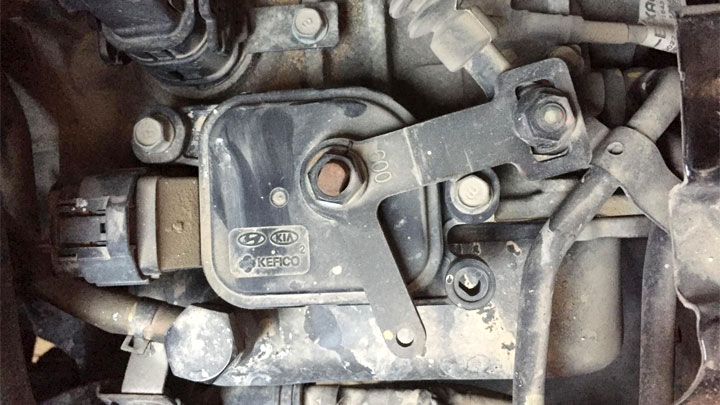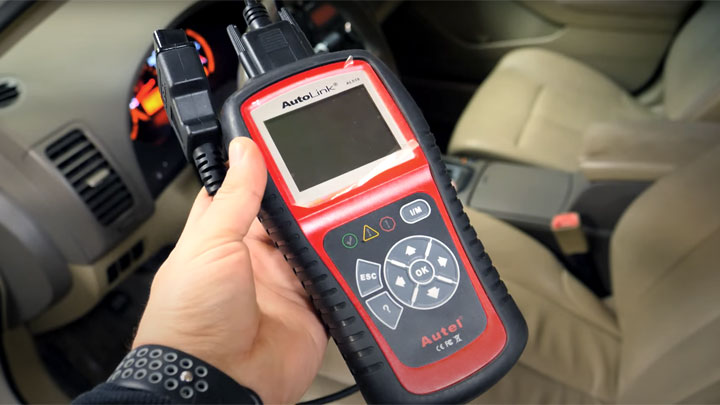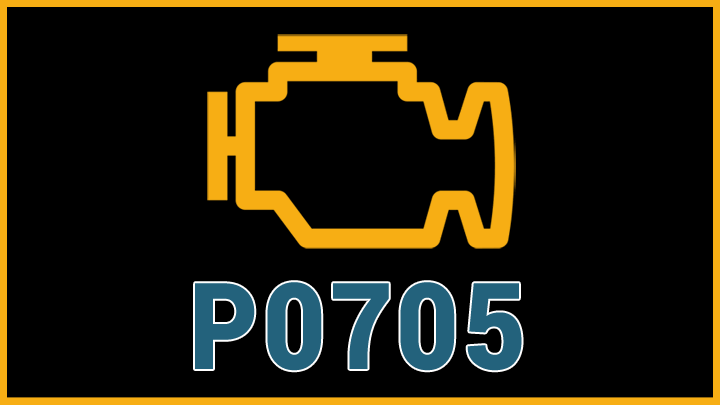Last Updated on July 28, 2022
While today’s vehicles are inherently reliable, they are in no way impervious to the occasional mechanical breakdown. Of course, this is nothing out of the ordinary, as little engineered by man operates indefinitely, without fail. For this reason, we, as motorists, must anticipate occasional vehicle-related issues of one sort or another.
Luckily, late model vehicles often provide us with a fleeting glance at the source of any issue at hand. This clue, of sorts, comes in the form of a diagnostic trouble code, which is recorded and stored by a vehicle’s ECM/PCM. These fault codes provide us with a basic description of the issue at hand.
One such diagnostic trouble code, which tends to be quite prevalent in nature, is DTC P0705. This fault code is indicative of an issue relating to a vehicle’s transmission range sensor circuit. This, in turn, relates to a vehicle’s ability to discern between park, neutral, drive, and reverse.
Read on to learn more about diagnostic trouble code P0705, as well as how to address such issues, should they arise in the future.
See Also: 7 Symptoms of a Faulty Transmission Control Module
What Does Code P0705 Mean?
Diagnostic fault code P0705 signifies an issue within a vehicle’s transmission range sensor circuit. This circuit, as well as the transmission range sensor itself, works to provide a vehicle’s ECM/PCM with feedback regarding a transmission’s shift position at any given time during operation.
The proper operation of this circuit is extremely important, due to its bearing upon a number of critical functions, such as the actuation of a vehicle’s neutral safety switch, illumination of a vehicle’s reverse lights, and allocation of proper shift points. Without this feedback, vehicle driveability is negatively impacted.
In the case of DTC P0705, a vehicle’s computer has determined feedback from the transmission’s range sensor to be non-existent or irrational in nature. As a result, a vehicle’s various intelligent modules are forced to function and interact without having a crucial piece of information available.
For the reasons mentioned above, most vehicles experiencing issues related to DTC P0705 are unable to shift with the same accuracy as would be otherwise possible. Meanwhile, other vehicles will not allow starter motor engagement without valid TRS feedback.
Symptoms of Code P0705

Diagnostic trouble code P0705 is often associated with a wide array of additional symptoms, some of which tend to be far more troubling than others. Recognizing such symptoms often proves invaluable when attempting to restore your vehicle back to an operable condition in the most expedited fashion possible.
The following are several of the most common symptoms associated with DTC P0705.
- Illuminated check engine light
- Intermittent no-start condition
- Failure to start in any gear other than neutral
- Sudden ability for the engine to start in any gear
- Delayed or erratic shifts
- Lack of reverse light illumination
Read Also: 7 Reasons Your Car Won’t Go Into Reverse
Causes of Code P0705

Diagnostic trouble code P0705 can result from a number of underlying issues, some of which are more difficult to isolate than others. Understanding the potential causes of this trouble code can make it easier to solve the issue at hand, thereby making for a smoother return to service.
The following are several of the most common causes of DTC P0705.
- Defective transmission range sensor
- Loose transmission range sensor
- Damaged transmission range sensor connector
- Shorted transmission range sensor wiring
- Transmission valve body issues
Is Code P0705 Serious?
Generally speaking, diagnostic trouble code P0705 is typically regarded as being extremely serious in nature. This is due to the numerous driveability-related symptoms that are often associated with issues of this type, the most severe of which can even leave you stranded with little to no recourse. This, in itself, poses quite a safety concern, which cannot be overlooked.
In the most severe of cases, DTC P0705 can be accompanied by a ¨no-start¨ condition, which prevents a vehicle’s starter from engaging the flywheel or flex plate.
A fault of this nature can also cause a vehicle’s reverse light to fail or can cause a vehicle’s transmission to shift at less than optimal times.
In any event, the root cause of diagnostic trouble code P0705 should be thoroughly diagnosed and repaired at the first available opportunity. This reduces the chance of further mechanical hardship, while also minimizing the risk of becoming stranded, without a functional vehicle for transport.
If you do not feel comfortable tackling a job like this on your own, you should consult a trusted mechanic or automotive service center as soon as possible.
How to Fix Code P0705

The following steps can be used to assist you in diagnosing and repairing the root cause of your vehicle’s P0705 diagnostic trouble code. As always, be sure to consult factory-specific service literature for your particular vehicle, before attempting any such repairs.
#1 – Check For Additional Trouble Codes
Before beginning the diagnostic process, be sure to check for the presence of any additional diagnostic trouble codes. Any such codes should be thoroughly diagnosed before proceeding to the next step.
#2 – Visually Inspect TRS
Begin by performing a careful visual inspection of your vehicle’s Transmission Range Sensor. Check for any signs of connector issues, compromised wiring, or impact with roadway debris. Any obvious signs of damage should be thoroughly repaired before proceeding.
#3 – Verify Sensor Response
Next, check for variations in voltage while back-probing between the TRS´ ground and feedback wire. An assistant will be required to shift between gears, while you read and interpret these voltages. All voltages should be compared to those specified by a vehicle’s manufacturer.
#4 – Replace Defective TRS
A lack of proper response during the above-mentioned test would be indicative of a faulty TRS, assuming that you have sufficient ground integrity. In such instances, TRS replacement will be necessitated.
#5 – Check Feedback Circuit/ECM
If all feedback was within range during prior testing, yet code P0705 persists, damage to the circuit’s feedback wiring between the ECM and the TRS sensor itself is likely to blame.
Alternatively, a faulty ECM or PCM could also serve as the source of such issues. Further testing based upon manufacturer recommendations will be required.




